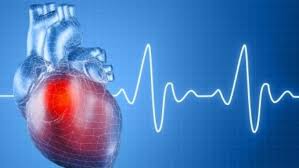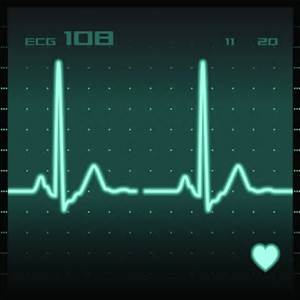First the engine to the human body is the heart; our car can’t work without a good working engine just like the body can’t work without a good working heart. In the heart we have a natural pacemaker of the heart which is called a Sinus Node. The sinus node conducts impulses from the top right chamber of the heart to the left chamber in the heart (called Atriums) and follows its way down to the bottom chambers (called ventricles) but for the conduction traveling originally from the right atrium to the left atrium the left side is slightly behind in conduction compared to the right when going down horizontally on each side due to the conduction having to cross over to the left top from the right top of the heart. Than the conduction continues on the atrio-ventricle valves (called AV valves) causing these valves to open and close completely allowing blood to drop in the ventricles from the atriums when open but without back up in the AV valves if the valve completely seals like any valve operating correctly by closing whether it be pipes, actual engine valves, or our veins/arteries or the actual heart in this case in the human body. Whatever valves used in our body or inanimate objects all pretty much play the same role.
The Rt. AV valve is the tricuspid valve the Lt. AV valve is the mitral valve. The conduction continues than to the bottom chambers-ventricles the conduction goes up and around the entire ventricles sensing up actually the purkinje fibers/papillary muscles to aid in contracting (depolarization) and relaxation (repolarization) of the ventricles. This allows the heart to go “Lub Dub” after from the SA node to the end process of conduction (described above) which gives a single beat or pulse. This allows our red blood cells that are more oxygenated than with carbon dioxide in them on the left side to go out the aorta to the bloodstream giving our tissues oxygen all over where needed when leaving the L side of the heart which after the 02 used up it will be returning to the right side when needing to refill with more oxygen and release the C02 from the red blood cells. How do we get our red blood cells reoxygenated? The right side; when the Lt side is doing its function through this conduction process so is the right side. The Rt side allows the blood on the right side more carbon dioxide red blood cells that are carrying with some oxygen (but very little) so these red blood cells after going through the whole conduction process from the Rt. ventricle enter into the pulmonary artery to the lungs (a much shorter pathway than the Lt. side of the heart sends its RBCs-it goes from the aorta down the body up to the brain and back to the Rt. side of the heart needing more 02). This side is where the RBCs get reoxygenated than reentry to the left side of the heart going through that side out the aorta when those cells get into the Lt. through through our last process of the conduction system. This conduction system is so vital in our heart operating properly. Since the Rt. and Lt. side have 2 completely different functions with our RBCs in dispensing 02 and C02 but both sides need to work correctly and are vital to keep us alive.
On a tele strip a sinus rhythm is made up of a P wave=Atriums contracting (atrial depolarization) than a straight line= atriums relaxing (atrial repolarization) than followed by a QRS wave=Ventricles contracting (ventricular depolarization) followed by a straight line than a T wave (ventricular depolarization) than in some a U wave. A U wave is on an electrocardiogram that is not always seen. It is typically small, and, by definition, follows the T wave. High probability you will see a U wave in normal sinus rhythm (NSR) or sinus bradycardia (SB). This is because the HR is slow enough to show a U wave on the rhythm you won’t see them in tachycardias. U waves are thought to represent repolarization of the papillary muscles or Purkinje fibers.
A regular QRS measures less than 0.12 which is with all atrial normal rhythms. If your rhythm has started in the atiums (upper chambers than the QRS is normal in measurement but if the rhythm starts in your ventricles-NOT GOOD-than the QRS is wide).
In most cases if the sinus node is working properly (located in the upper Rt chamber or atrium) with the person taking care of their body staying in good shape, eating healthy and getting rest to balance stress and no cardiac disease or in some cases compliance with all above in taking cardiac meds it shows on the telemetry monitor sinus rhythm heart rate (HR) 80 – 100 but if HR over 100-150 the person has sinus tachycardia (fast pulse) or if HR less than 60 it is sinus bradycardia (slow pulse) which maybe normal for the person, like an athlete. All these rhythms derive from the sinus node originally and have regular rhythms giving you a regular HR not irregular unless you have a premature contraction from the atriums causing a PAC (Premature atrial contraction) or a PVC premature ventricle contraction that pop up in your sinus regular rhythm (but remember simple stress or caffeine can cause this as well as heart disease of many types). These premature contractions pop on the telemetry reading with the ingredients that make up a atrial rhythm = p wave + a normal QRS + t wave unlikely for a u wave or other rhythms as well which we will get into. All these occasional or frequent premature contractions mean is the heart rhythm of the heart is getting irritable. The more irritable any rhythm gets the higher the probability the rhythm can go into a worse rhythm.
PVCs in the rhythm has the features that are the same as a atrial except no p wave with the QRS measuring wide because the contraction is in the Ventricle where the p wave is in the chamber above it (atriums). In the Ventricles where a premature contraction occurs will only have a wide QRS rather than a regular because of the chambers its in=Ventricles.
PVCs will be discussed with Ventricular Rhythms.
If the sinus node breaks down the heart works by having the next area of conduction take over by compensating having the natural pacing take over in the atriums where we have atrial rhythms which start at a HR over 150 unless controlled atrial fibrillation but we’ll get into that rhythm shortly.
The rhythms you see when the atrium is the natural pacemaker of the heart taking over for the SA node that doesn’t work with the heart now compensating with the atrium, they are atrial tachycardia or SVT supraventricular tachycardia, simple meaning above the ventricles. This is where the rhythm is over 150 to 250 showing a p wave and QRS and usually not a T wave but if the HR is slow enough it might show on the telemetry monitor but usually doesn’t. If it shows no PACs or PVCs it’s a regular rhythm.
Another atrial rhythm is atrial flutter or A- Flutter)=AFL which shows only QRSs with flutter waves. A regular rhythm but this rhythm needs to be changed or in time the heart will stress out and lead on to more dangerous rhythms. This has no p waves but flutter waves with QRS waves. You can have 2 flutter waves to every QRS wave or 3 to every QRS or 4 flutter waves to every QRS or even 5 but the it can even be a variable ratio of flutter waves to every QRS wave meaning the rhythm is getting more irregular and dangerous. If left untreated, the side effects of AFL can be potentially life threatening. AFL makes it harder for the heart to pump blood effectively. With the blood moving more slowly, it is more likely to form clots. If the clot is pumped out of the heart, it could travel to the brain and lead to a stroke or heart attack.
The treatment for aflutter is cardioversion using a defibrillator in sync mode so when the shock is given it lands with the R wave and avoiding the vulnerable T wave section which if the shock landed their could put this rhythm into V Tac or V fib. The other atrial rhythm is atrial fibrillation (afib) and if under 100 great for if its chronic afib it will be hard to change to NSR but if a new Dx. of afib higher odds with cardioversion it will shock it the rhythm back into NSR. Those who are chronic afib or new afib that can’t convert to NSR usually are given Coumadin and ASA aspirin to keep the blood from clotting in the heart and breaking free with the irregular rhythm. Also possibly used is Beta blockers that slow the conduction of impulses down being a beta blocker it blocks the beta stimulus especially lopressor or Metoprolol that is a selective beta 1 stimulus blocker which is in the heart to slow the HR down. Than there is calcium channel blockers possibly used to slow down the HR if needed by blocking cardiac cells sending impulse signals from the top to the bottom of the heart. Keeping afib under 100 of a pulse rate and more like 80 or less can live a completely normal life if compliant with meds, diet and exercise.

